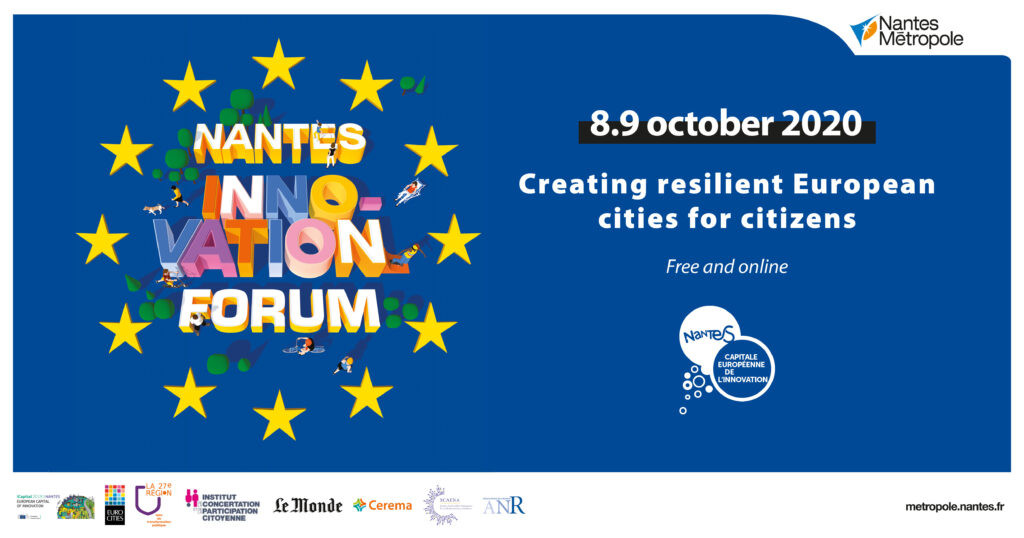
Following the Nantes Innovation Forum, we have had the chance to interview Franzisca Beeken, policy officer energy transition at the municipality of Groningen.
Your city is very engaged in energy transition, so can you tell us more about the projects you are currently following?
Personally, I’m involved in two projects: the first one is “Energy Loket Groningen” , our one-stop shop for individual and citizens initiatives. At the beginning of the year we made free heat-scans of 500 houses and asked the state what measures could be taken. We have also received a national subsidy which enables us to give away 9000 energy boxes for around 50€, that can be chosen by citizens on the internet through a voucher code and picked up at local hardware stores.
The second project I’m involved in is the Windplatform, in order to study if it is possible to place windmills within the borders of the city: This is still a process to be decided together with the citizens. We are still conducting research, studying the bats, the birds and their flying behaviors.
Another very interesting EU initiative is the Making City project, which sees Groningen as one of the leading cities or lighthouse cities. Its aim is to create neighborhoods that share clean energy among them : so, how does this project work, and what has been the impact on the city?
In 2018 Groningen has been appointed “Lighthouse city” by the EU Commission, because our approach to energy transition can be an example to other European cities. We are very proud of that, because we believe cities have a crucial role in tackling climate change by significantly reducing their carbon emissions following the PED concept (Positive Energy Districts). This concept is being tested in the two lighthouse cities, namely Groningen and Oulu, in Finland. In the future it will be replicated in 6 follower cities in Italy, Turkey, Spain, Poland, Slovakia, and Bulgaria. Three standard types of houses will be made sustainable with innovative measures to achieve an energy positive district: this means that more energy is generated in and around the houses than it is consumed. This is achieved through new and traditional sustainability measures, linked together in an innovative way. The reactions are very positive, and the goal of this project is to have a spillover effect, allowing other cities to become more sustainable.
During the laboratory, you mentioned that Groningen wants to achieve climate neutrality by 2035, but, in order to reach that, you estimated a cost of 10.000 € per inhabitant. So, are you elaborating some strategies to convince and include everyone?
In order to reach the goal of carbon neutrality in 2035, we have to focus both on energy and heat production. We have to strengthen the electric network, install district heating, seen as the best alternative for natural gas. Installation though is very costly, and that is why we have estimated the cost per household to be around 10.000€, and approximately 100.000 housing equivalent will benefit from district heating from 2035. We also need to ensure the fuel for the district heating has to come from green and sustainable sources.
We also have to upscale our wind and solar energy, and the cost for that is estimated to be around 500 million euros. However, the main responsibility still lies with the building owners, and we are trying to support them with our own toolbox, which consist of financing loss and regulation, energy performance guarantees, etc.
I want to focus on the EU, because we often look at the EU as a money giver and nothing more. We know though that financing plans is not the only thing the Union does. What’s the role of the EU concerning projects?
Funding plans is not the only thing the EU does: the EU is also there to promote peace, democracy, and a unified economic and monetary system. Moreover, over time it has expanded its tasks towards breaking down borders and barriers, promoting inclusion, and combating discrimination.
From a professional perspective, as a Policy Officer, the EU is also fostering development in terms of science and technology. So, the EU really encourages and even forces us to look across the borders of our cities and get in touch with others, in order to take smarter decisions, hopefully design better policies, and influence policy at the EU level.
Also, linked to the previous question, How important is the cooperation among European cities in this regard?
Cooperation with other cities, as I mentioned, is crucial. Last time I checked, we were engaged as a municipality, in 12 EU projects. We also have a EU offices here, in Assen, Leeuwarden, Emmen, and in Brussels that helps us connect with the other European cities.
In Groningen you are focusing on green energy instead of gas. That is a noble goal, but how to keep up the pace with new technologies?
In Groningen we literally feel the need to move towards clean energy and away from natural gas, very popular in the 60s but that is causing earthquakes : in 2019 we have had 11 earthquakes here, so we have to take action. There are risks by all means: the costs may be much higher in the end, the financing may not work out the way we expected, but we are conducting research and risk-analysis.
We think then our current approach is the best one at this point in time. It could be that there are new techniques in 5 years; however, if we do nothing and wait for 5 years for these new “maybe better” techniques, all we know for sure is that we will not have made a change at all.
Thank you very much Franzisca Beeken, policy officer energy transition at the municipality of Groningen.